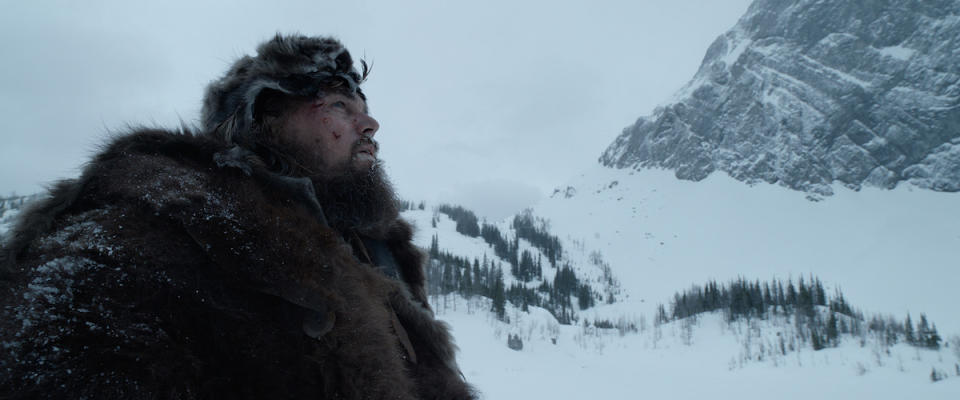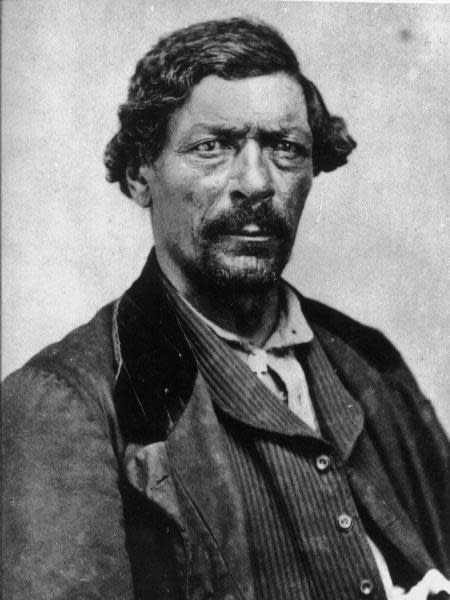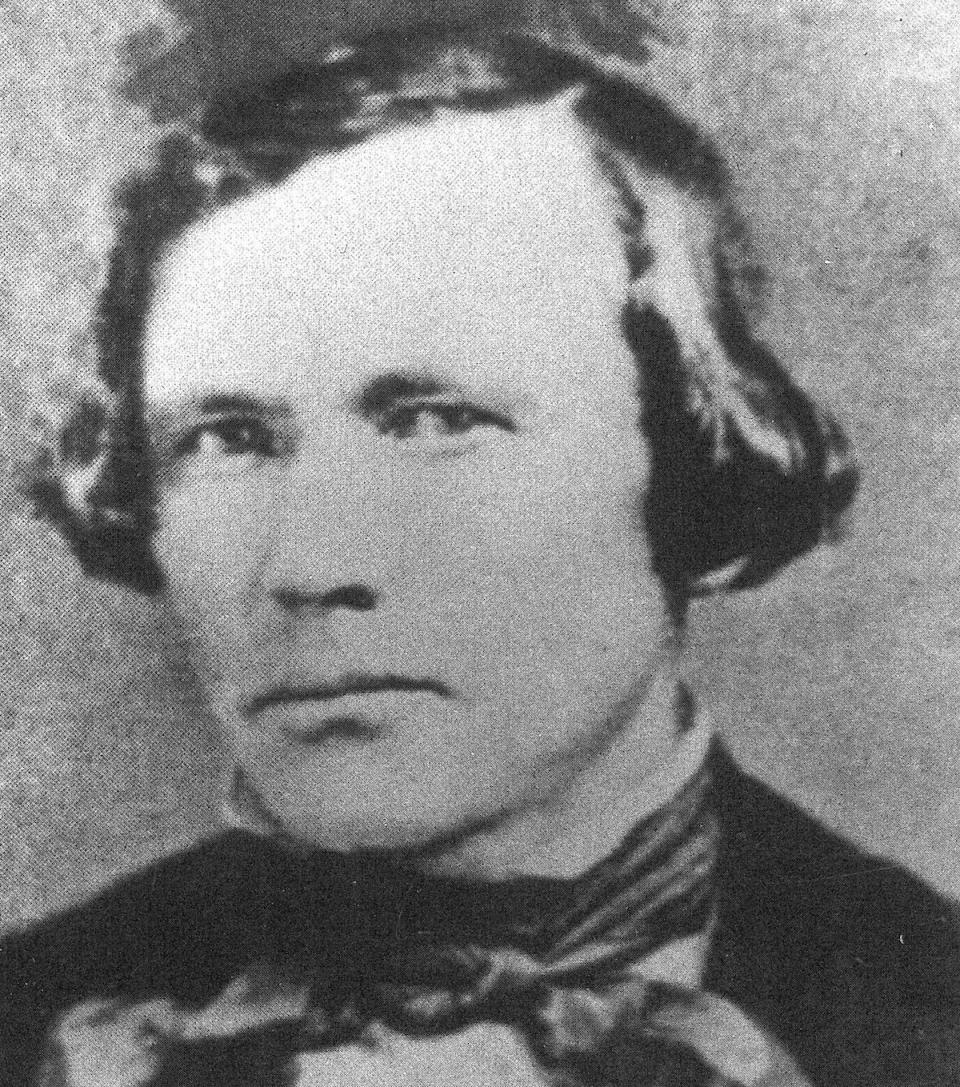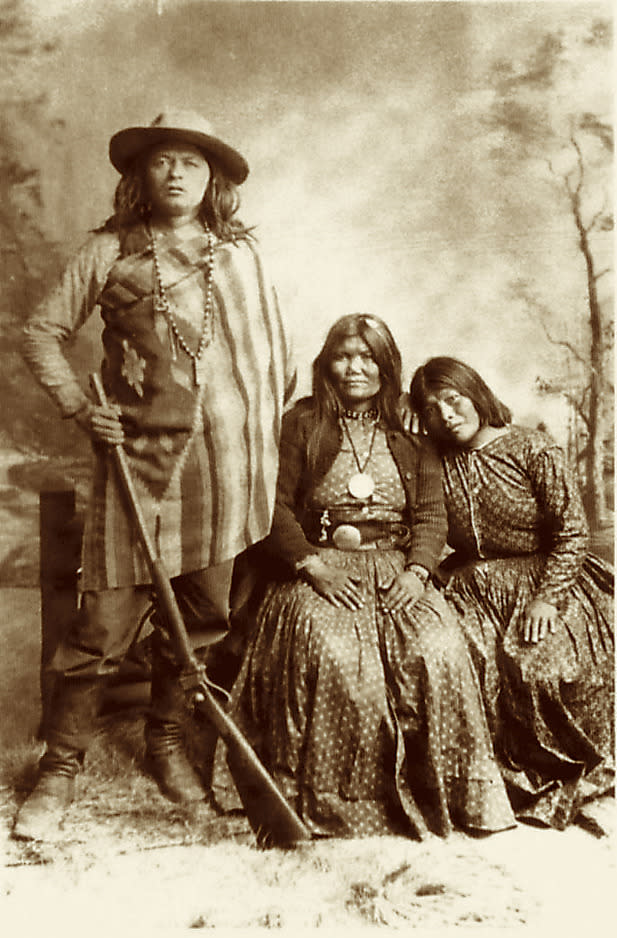The Next 'Revenant': We Ask Some Experts About Another Great American Frontier Epic

Oscar front-runner The Revenant dramatizes the incredible, real-life tale of early-American fur trader Hugh Glass (Leonardo DiCaprio) and his relentless will to survive after being left for dead following a brutal bear attack during the winter of 1823. Directed by Alejandro González Iñárritu and based on the 2002 book by Michael Punke, the harrowing story has proven to be a huge hit at the box office as well as a serious awards-season contender, earning 12 Oscar nominations, the most of the year.
Whether or not The Revenant wins big at the Oscars on Feb. 28, it’s sure to inspire future movies about unbelievable outdoorsmen and women. Which frontier figure should Hollywood turn to next? Yahoo Movies spoke with historians Paul Hutton of the University of New Mexico, Jon Coleman of Notre Dame, and Jay Gitlin of Yale to get some ideas. Below are some under-sung American folk heroes just waiting for their moment on the big-screen.
A Real-Life Warrior Woman
Depending on how her story is adapted, 19th-century Apache warrior Lozen could be a fantasy-action heroine or a character grounded in historical realism. Legendary Apache leader Geronimo — who himself has been portrayed many times in movies and on TV — called Lozen “Warrior Woman,” and her powers were mythical. A prophetess among the Chihenne Chiricahua Apache, she fought alongside her brother, a chief named Victorio. She was a key weapon in his arsenal because she could sense impending danger. “She had this special prayer song that she sang and would hold her arms up to the sun,” explains Hutton, who writes about Lozen in his upcoming book, Apache Wars. “The direction in which her hands would tingle was the direction the [opposing] soldiers were located.”
Lozen’s story even has a tragic, highly cinematic twist: At one point, she took an injured young woman back to their reservation, breaking away from Victorio’s warpath to Mexico. “Because she’s not with them and can’t foretell that the troops are coming, Victorio and all of his warriors are killed in a last stand in Mexico,” Hutton says.

Freed Slave–Turned–Fabled Frontiersman
James Beckwourth (pictured above) saw and experienced more in his life than most, and his story could make for a sweeping historical epic. Born into slavery in Virginia, he moved to St. Louis with his master in 1806 and was later freed as a teenager. He subsequently worked for the Rocky Mountain Fur Company, where Hugh Glass was an original employee.
Beckwourth explored the West, gaining a reputation as a fur trapper and mountain man. Able to pass as a Native American due to his mixed race, he eventually posed as a lost Crow Indian tribesman and married a Crow woman. He chronicled his adventures in an 1856 memoir filled tales of battle, exploration, and government corruption. “Beckwourth is an excellent example of the racial tensions and fluidity of the American West for most of the 19th century,” says Coleman.
Native Woman in a White Man’s World
Known for her beauty, Owl Woman was far from just a pretty face. The daughter of a prominent Cheyenne leader, Owl Woman married St. Louis trader William Bent in 1835 and had four children. Her would-be film is a fish-out-of-water drama about learning to adapt to a new way of life in a burgeoning, multilingual society.
Bent and Owl Woman’s marriage was one of deep love, but it also was focused on establishing their trading post in what’s now Colorado. “Their family represented the fur trade and this era far better than Glass,” argues Coleman. “The business worked through political and economic alliances that were forged through the creation of mixed families.”
The big-screen version of Owl Woman’s tale might start out with her childhood experience with warring Indian tribes, then move to the tense negotiations for peace she and her husband later encouraged. These efforts set up their trading post for success, but it wasn’t smooth sailing from there. Owl Woman actively thwarted predatory tribes looking to ransack trade caravans by flashing a signal using a mirror — another exciting sequence in her potential film.

War Anti-Hero
Christopher Houston “Kit” Carson started his career as a fur trapper in the 1830s, living among and marrying into the Araphaho and Cheyenne tribes. But his life took a dramatic turn when he became a Union general during the Civil War, tasked with fighting the Navajos. He sent many of them on what’s called “The Long Walk” to eastern New Mexico. “It’s a highly controversial event,” says Hutton. “He had been their friend and then became their enemy.”
Kit Carson’s tale could be adapted from Hampton Sides’ best-selling 2007 book, Blood and Thunder. In fact, it was optioned by Steven Spielberg’s DreamWorks in 2006. “It holds a lot of promise for a big epic film,” adds Hutton. “He was very famous in the 19th century, but really hasn’t sustained that fame."
Fur Trading Empress
From The Revenant, one might assume fur trading was a man’s game. But one of the most successful traders of the time was Madeline Laframboise of Grand River Valley in what is present-day western Michigan, notes Gitlin. High drama happens in her tale when her husband is murdered, forcing her to take over the business with her sister Therese. She was part Odawa Indian and part French, and fluent in both languages, plus English and Ojibwe — which contributed to her prosperous business. A woman who found a way to flourish after tragedy, the opener of her film could include the tragic death of her father when she was not yet three years old.

A Boy Inspires Years of Battle
Mickey Free’s biopic would undoubtedly demand high drama and epic battle scenes. Born Felix Telles, Mickey Free was a half Irish, half Mexican boy whose childhood kidnapping in 1860 gave rise to decades-long warfare between Apaches and Americans. "He was torn between two worlds,” says Hutton. As Free (pictured above with his wives) was being raised by Apaches, his stepfather insisted on military intervention to secure his safe return, setting the stage for a pivotal confrontation in 1861 that served as the catalyst for years of bloody battling. Free grew up to become a scout for his adopted Native American tribe. Later, he worked as a bounty hunter, tracking a fellow tribesman gone renegade known as the Apache Kid. “He’s simultaneously distrusted and desperately need,” Hutton says of Free. “They all blame him.”
Shape-Shifting Outdoorsman
A figure who could drive a sequel or even a prequel to The Revenant, Edward Rose was an associate of Hugh Glass. Also known as “Five Scalps,” “Nez Coupe,” and “Cut Nose,” Rose was a mixed heritage trapper who some claimed was white, Indian, and Black. He lived among the Crow Indians in his youth and used his ease among both native peoples and Euro-American traders to his advantage. “He was a shape-shifter that defined the many cultures and perspectives that made this world,” notes Coleman. Eventually, Rose helps instigate the Arikara attack that is dramatized in an intense action sequence at the open of Iñárritu’s Oscar-nominated film. Another Glass connection: Rose died with him in 1833 when they were attacked by Arikara near Fort Cass in present-day Charleston, Tennessee.
(Photos: 20th Century Fox, National Archives, True West Magazine/Paul Hutton)

 Yahoo News
Yahoo News 